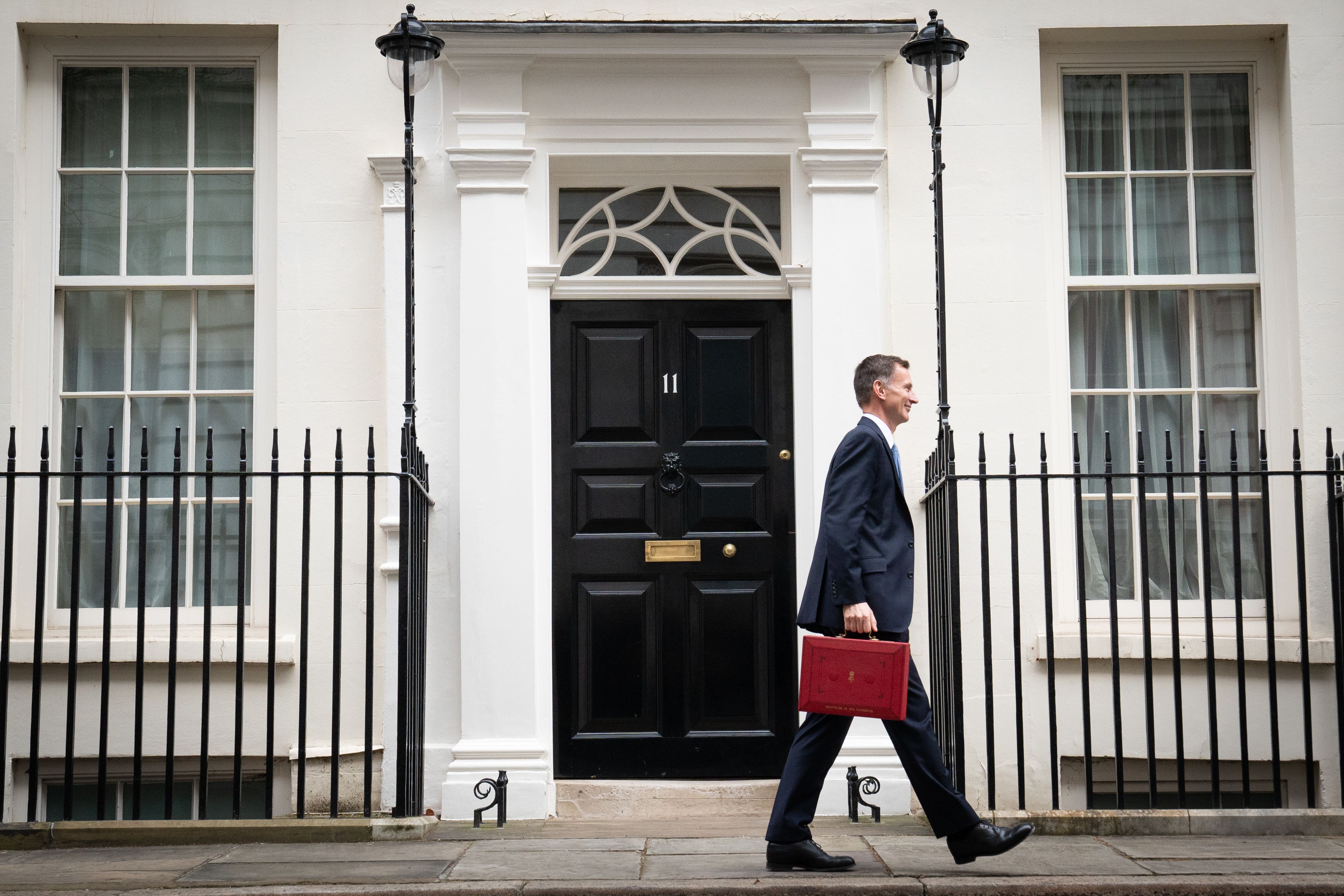Budget 2023: Record fall in disposable income and other historic benchmarks
Living standards in 2027/28 will still be below pre-pandemic levels.

Your support helps us to tell the story
From reproductive rights to climate change to Big Tech, The Independent is on the ground when the story is developing. Whether it's investigating the financials of Elon Musk's pro-Trump PAC or producing our latest documentary, 'The A Word', which shines a light on the American women fighting for reproductive rights, we know how important it is to parse out the facts from the messaging.
At such a critical moment in US history, we need reporters on the ground. Your donation allows us to keep sending journalists to speak to both sides of the story.
The Independent is trusted by Americans across the entire political spectrum. And unlike many other quality news outlets, we choose not to lock Americans out of our reporting and analysis with paywalls. We believe quality journalism should be available to everyone, paid for by those who can afford it.
Your support makes all the difference.Forecasts published alongside Jeremy Hunt’s Budget suggest the UK economy will pass a number of grim milestones over the next few years.
Here are some of the key benchmarks:
– Largest fall in disposable income since records began
The rise in the cost of living means real household disposable income per person is forecast to drop by 3.7% in 2022/23 and by 2.0% in 2023/24, according to the Office for Budget Responsibility (OBR).
This is slightly less than in the previous OBR forecast last autumn, which pencilled in drops of 4.3% and 2.8% respectively, but 3.7% is still the largest fall in a single financial year since comparable records began in 1956/57.
It is also only the third time in modern history that the UK has seen back-to-back falls in living standards.
The previous two occasions were in 2010/11 and 2011/12, and in 1975/76 and 1976/77.
The 5.7% cumulative fall across 2022/23 and 2023/24 is the largest two-year fall since records began.
It means real living standards in 2027/28 are still likely to be 0.4% lower than before the Covid-19 pandemic.
But they are 0.6% higher than the previous forecast, thanks to improved market expectations for gas prices and economic output.
– Highest tax burden (as % of GDP) since end of Second World War
The OBR forecasts the overall tax burden in the UK will rise to the equivalent of 37.7% of GDP (gross domestic product, or the total value of the economy) by 2027/28.
This is the highest level since the Second World War.
It was previously forecast to peak at 37.5% of GDP in 2024/25.
A peak of 37.7% in 2027/28 would be 4.7 percentage points above the level before the pandemic.
– Highest debt (as % of GDP) since 1960/61
The headline measure of public sector net debt in the UK, which includes the Bank of England, is forecast to reach the equivalent of 103.1% of GDP in the financial year ending March 2024.
This would be the highest level since the end of the financial year 1960/61, when debt stood at 107.5%: a time when Harold Macmillan was Conservative prime minister, there were only two television channels in the country, and Elvis Presley was top of the singles chart with Wooden Heart.
After 2023/24 the forecast starts to fall, reaching 96.9% of GDP in 2027/28, its lowest level since 2020/21.
– Highest ratio of corporation tax to GDP since 1965
Jeremy Hunt used his Budget speech to confirm that the main rate of corporation tax will rise from 19% to 25% in April, taking it back levels last seen in the early 2010s.
Corporation tax receipts are forecast to reach the equivalent of 3.7% of GDP by 2027/28 – their highest level since the tax was introduced by Labour Chancellor of the Exchequer Jim Callaghan in 1965.
– Annual rate of inflation has peaked
Inflation in the UK has peaked and will drop sharply over the next couple of years, the OBR forecasts.
After reaching 9.1% in 2022 – the highest level since 1981 – the annual rate of inflation will be 6.1% this year, before falling to 0.9% in 2024 and just 0.1% in 2025.